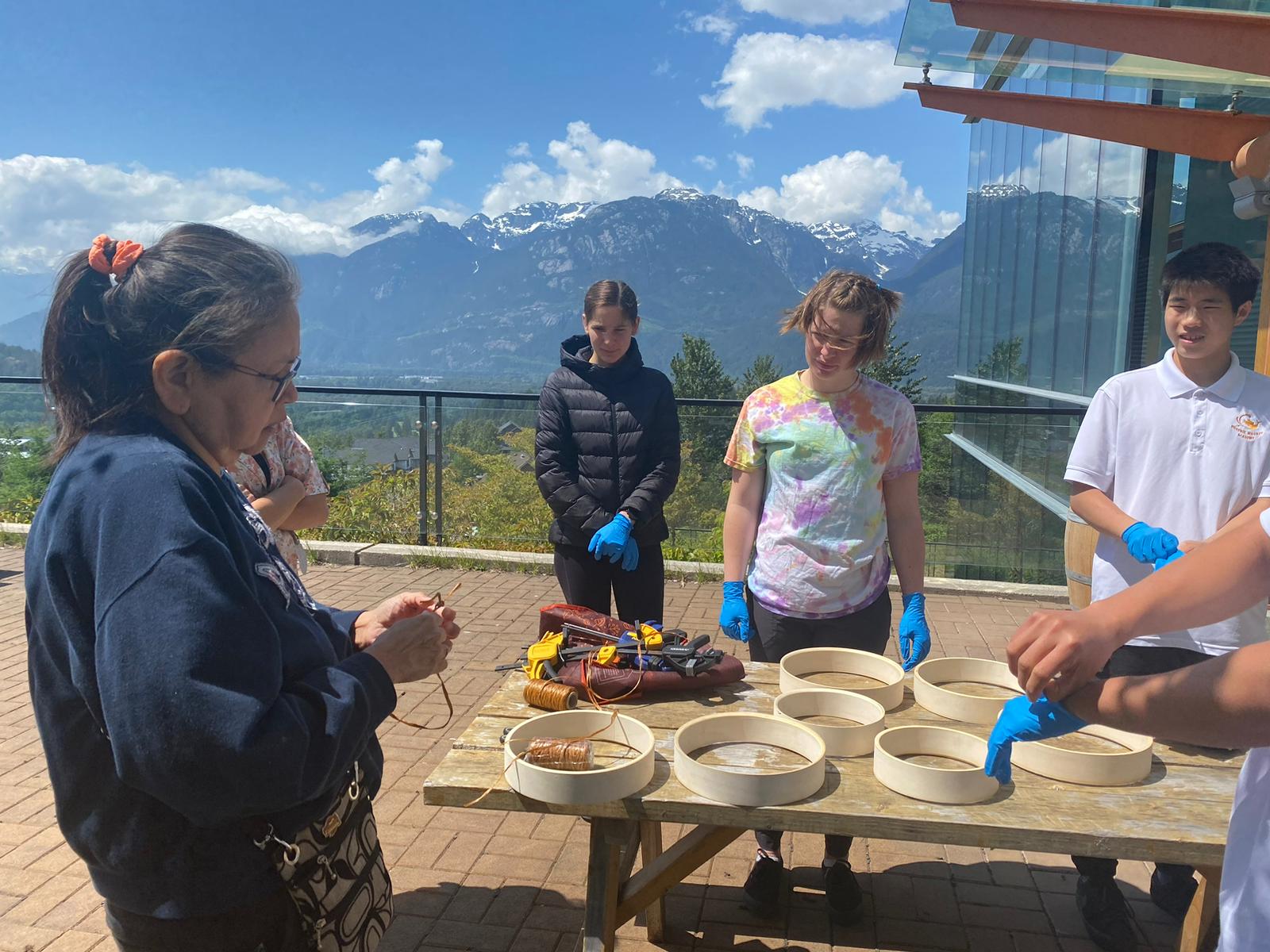Honoring Tradition: A Drum Making Project with Alice Guss
August 22, 2023
Introduction:
Engaging in hands-on projects that connect students with local Indigenous cultures is an invaluable way to promote cultural appreciation and understanding. In this blog post, we will delve into a captivating drum making project that immerses British Columbia high school students in the traditional hide processing method. Led by Alice Guss, a respected member of the Squamish First Nation, this project not only perpetuates Indigenous traditions but also aligns with the British Columbia High School Curriculum, providing students with a well-rounded educational experience.Embracing Traditional Hide Processing:
To create an authentic and meaningful drum, the project embraced the traditional hide processing method, which involves several steps. Students began by soaking the hide in a creek, a process that both softens the material and symbolically connects them to the natural environment. They then meticulously worked on hair removal, fleshing, and stretching, ensuring the hide was properly prepared. Smoking the hide over a fire was another vital step, infusing it with cultural significance and enhancing durability. Finally, students punched holes around the hide's edge and utilized sinew to string the drum, honoring ancient techniques and craftsmanship.Collaboration with Alice Guss:
Alice Guss, a respected member of the Squamish First Nation, played a pivotal role in guiding students throughout the project. With her expertise and cultural knowledge, Alice shared the significance of each step in the hide processing method, highlighting the interconnectedness between nature, culture, and the drum-making process. Her presence fostered a deep appreciation for Indigenous traditions and allowed students to learn directly from an Indigenous mentor, fostering cultural understanding and respect.Connections to the British Columbia High School Curriculum:
This drum making project aligns with various aspects of the British Columbia High School Curriculum, making it a valuable educational experience. Here are a few connections:- a. Social Studies: The project offers an immersive opportunity to explore the history, traditions, and cultural practices of local Indigenous communities. It promotes cultural awareness, encourages respect for diversity, and contributes to a more comprehensive understanding of Canada's heritage.
- b. Fine Arts: Engaging in the process of drum making nurtures students' artistic and creative skills. They learn about traditional Indigenous art forms, including patterns and designs, which are often featured on drums. Additionally, students gain hands-on experience in working with materials and craftsmanship.
- c. Environmental Studies: The initial step of soaking the hide in a creek highlights the interconnectedness between nature and cultural practices. Students develop an appreciation for sustainable practices and the significance of water resources to Indigenous communities.
- d. Personal and Social Development: By collaborating with Alice Guss and immersing themselves in Indigenous traditions, students gain valuable insights into intercultural relationships and develop empathy, respect, and appreciation for diverse perspectives.






